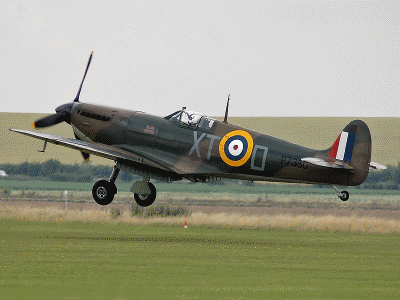I’ve been reading the book Portrait of a Legend: Spitfire by Leo McKinstry in the last few days. I found it by accident while I was browsing through McNally Robinson, the best book shop in Saskatoon. It is a good read, and has some interesting observations to make about the aircraft, the design and manufacturing process and the pilots who flew the plane. One of the interesting observations is that the RAF could have had many more Spitfires available for the Battle of Britain if the production lines had been better run. That would have been an interesting “what if scenario” – posit an RAF with a dramatically improved capability. How would the Luftwaffe have responded? One suspects that they would have suffered terrible casualties and that would have accelerated aviation research in Germany in an attempt to regain air superiority. It might also have delayed Operation Barbarossa, the attack on the Soviet Union. Another comment is that the command and control organisation of the RAF was perhaps a little too decentralised. If Air Marshal Dowding had retained overall control of operations, instead of devolving it down to the Group level, the RAF effort might well have been better coordinated and able to respond even more effectively. It is quite an interesting counterpoint to the usual view that the RAF was very hard pressed and only won because of German strategic errors in changing targets, from the airfields to London.

Spitfire Mk 2a
The book is very well written, in a journalistic style rather than an academic one, which is hardly surprising, as the author is a journalist, albeit with a history degree. As usual with this type of popular history, there are many short comments from eye witnesses included to give the perspective of the “ordinary person”. I did find the content to be a little unbalanced. There is a lot of detail oof the pre-war design phase , and on production and operation before and during the Battle of Britain, but much less on the rest of the war and postwar service. A highly recommended read, particularly if you are interested in World War Two, or the Spitfire or both.

Spitfire: the elliptical wings are the distinguishing feature in these early aircraft
I shamelessly borrowed the title of this post from Capt. W. E. Johns 1941 title in the “Biggles” series!
No comments:
Post a Comment